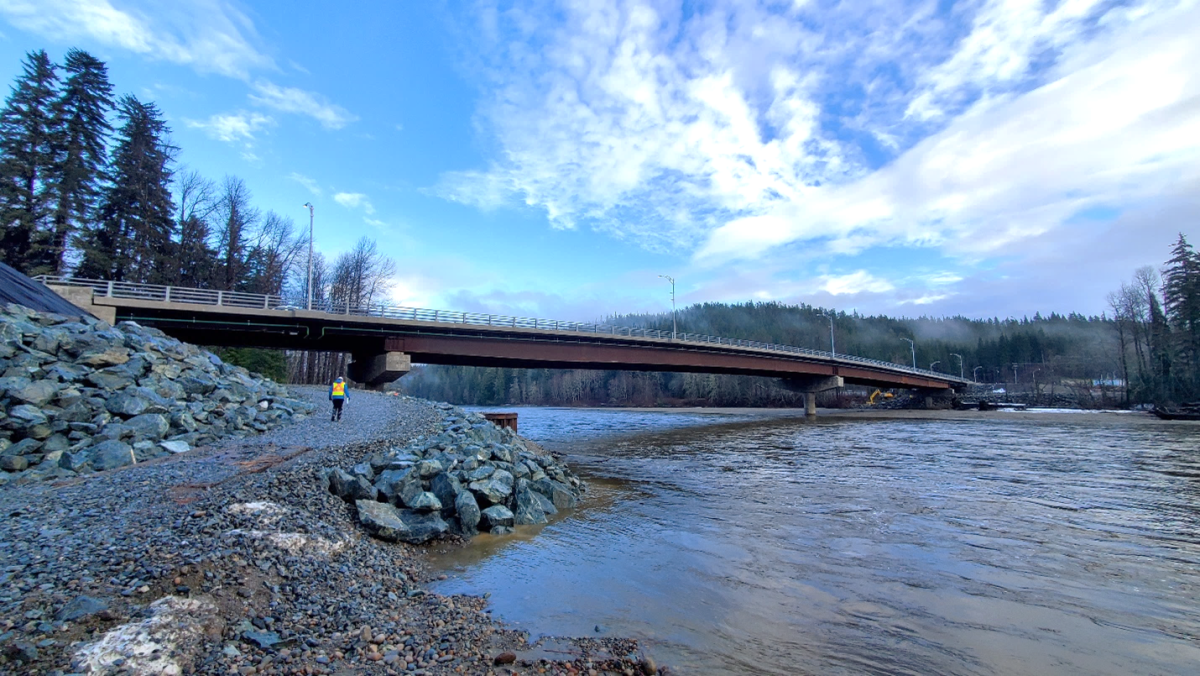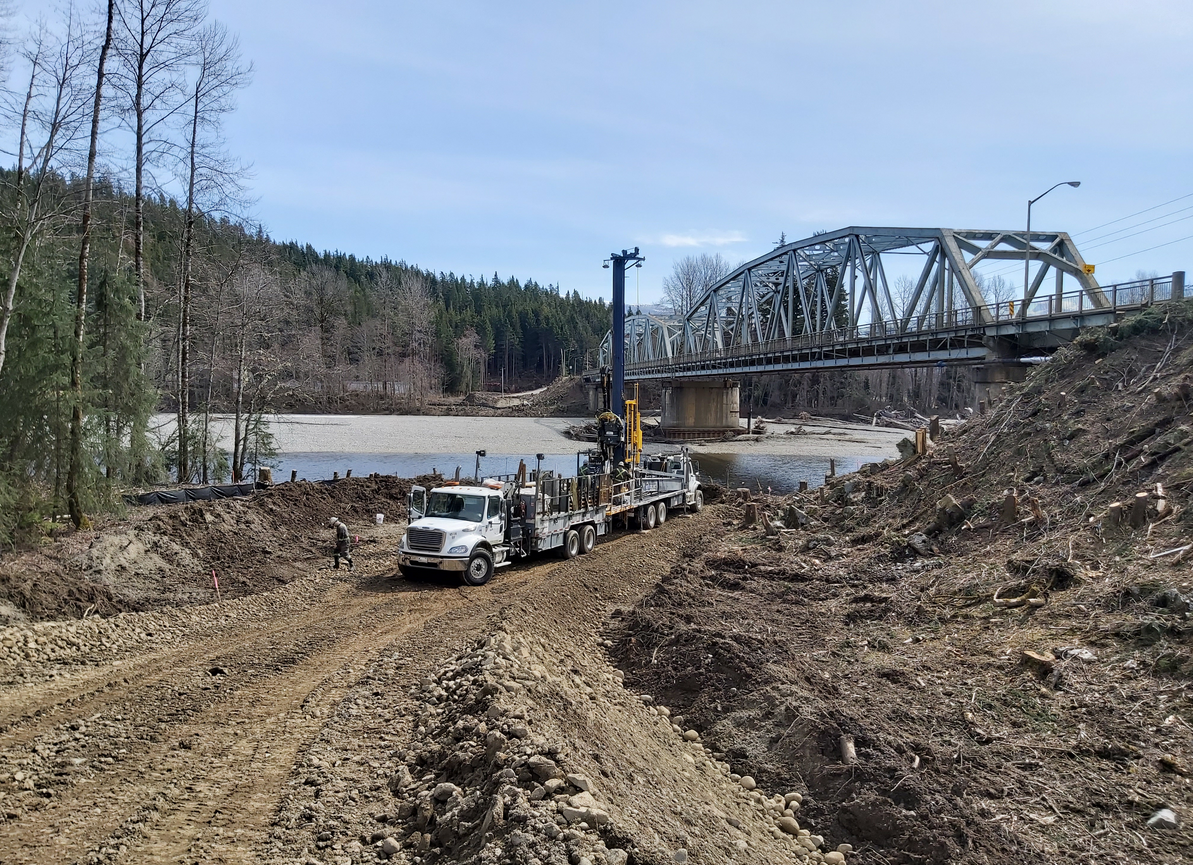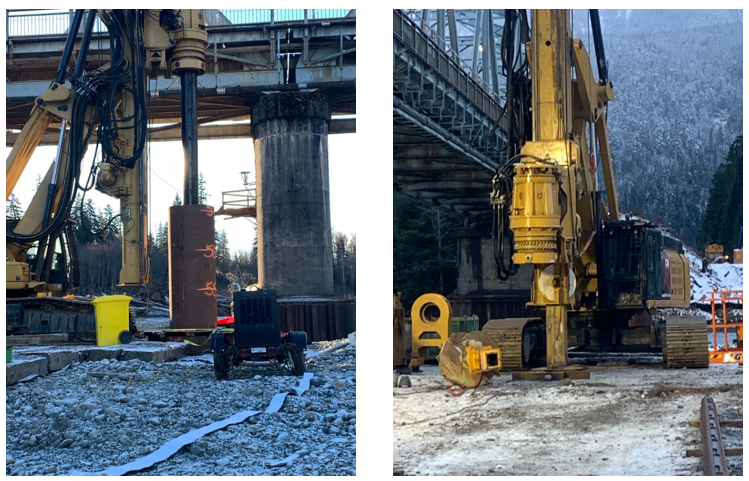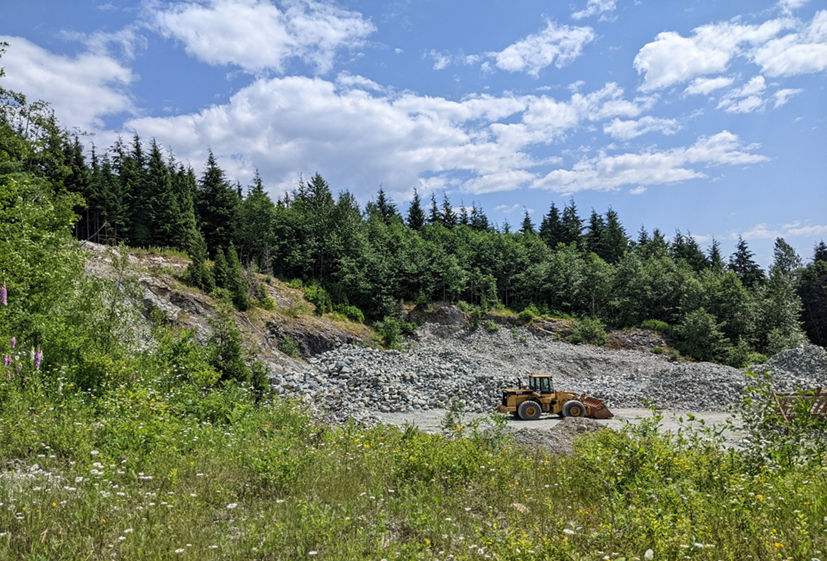A 69-year-old highway bridge provided the only connection across the Kitimat River between the municipality of Kitimat, BC, and its industrial lands. With the industrial lands becoming increasingly busy due to the growth of LNG Canada, the bridge required replacement or major repairs to accommodate the growing amount of industrial traffic crossing back and forth.
Ultimately, the District of Kitimat made the decision to replace the bridge through a Design-Build contract awarded to the Ledcor-Haisla Limited Partnership. Brybil Projects, a subsidiary of the Associated Engineering Group of Companies, was the lead design consultant for the project. Thurber Engineering Ltd. acted as a sub-consultant to Associated Engineering, providing geotechnical engineering, construction materials testing, and metal leaching/acid rock drainage (ML/ARD) services.
The new two-lane bridge opened on July 31, 2023. It is 230 metres long and consists of four spans, 1,000 metres of realigned road approaches, upgraded drainage infrastructure, roadway lighting, erosion and scour protection, and private utilities.

The new Haisla Bridge, viewed from the west side of Kitimat River. Photo Credit: Associated Engineering.
Geotechnical engineers play a pivotal role in the design and construction of major bridges, particularly in seismically-prone areas. Thurber provided the following services for the Haisla Bridge project:

Geotechnical investigations at the west pier of the new Haisla Bridge in the spring of 2021. The existing bridge can be seen in the background. Photo Credit: Thurber Engineering.
The design of the new bridge incorporates an innovative foundation concept to support the bridge piers over the Kitimat River. The piers consist of single concrete columns founded on a telescoping monopile, which comprise a larger diameter casing for lateral resistance and a smaller diameter casing socketed into bedrock for axial resistance. This configuration offered several advantages over the reference concept design in terms of constructability, hydraulics, and environmental footprint.
The size of the rock sockets (min. 3 m deep and up to 1.2 m in diameter) required specialized drill tooling designed for very strong bedrock. The variable nature of the bedrock surface beneath the bridge required some of the monopiles to be installed deeper than expected. Other challenges included discontinuous soil layers, which were found to be susceptible to seismic liquefaction under the influence of the 2,475-year earthquake, which had to be accounted for in the foundation design.

Construction of the centre pier substructure in late 2021. The existing bridge can be seen in the background of both photos. Photo Credit: Thurber Engineering.
The BC Ministry of Transportation and Infrastructure requires ML/ARD assessments for all highway projects that involve the disturbance or use of more than 1,000 cubic meters of rock materials, including bedrock disturbance in rock cuts or importation of rock material from quarries or talus slopes. The presence of ML/ARD in rock disturbed by or imported to a project site can have significant environmental impacts.
Thurber provided ML/ARD assessments for the quarried rock used in the bridge construction and erosion protection and the rock cuts generated by the bridge re-alignment along Haisla Boulevard. As part of this assessment, we identified an area of potential acid generation next to the existing roadway. This required modifications to the roadway design to avoid disturbing the bedrock in the ARD-prone area.
Thurber completed site visits, visual identification of the local geological conditions, collection of rock samples and interpretation of laboratory-based static assessment data, quarry assessment, and review of third-party assessment reports for other rock quarries in the area. We also provided follow-up monitoring of the quarry contractor’s field operations to confirm the effectiveness of material sorting to segregate potentially acid-generating rock from lower-risk rock material.

The Haisla Bridge project sourced rock materials from this quarry. Thurber assessed the quarry for ML/ARD potential. Thurber’s portable ML/ARD labs and specialized equipment provide quick and accurate ML/ARD assessments that help our clients maintain regulatory compliance and meet their environmental commitments. Photo Credit: Thurber Engineering.
Thurber has supported the design, construction, and maintenance of bridges of all sizes since the company’s inception in 1957. Our experience includes pedestrian bridges on remote hiking trails, major roadway bridges, and rail/light rail transport bridges. In addition to geotechnical engineering and ML/ARD services, Thurber provides: